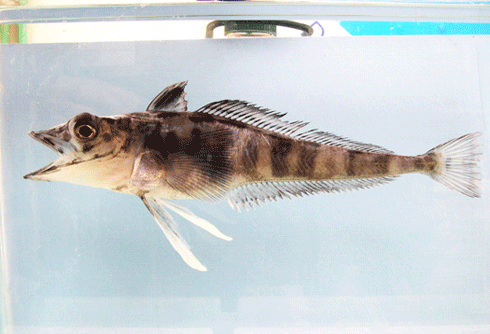
|
Published: 20 February 2012
Warmer climate threatens ‘antifreeze’ fish
Climate-change induced warming may be endangering the survival of fish with ‘anti-freeze’ proteins evolved to survive the frigid waters of the Southern Ocean around Antarctica.
Notothenioids account for the bulk of the fish diversity in the Antarctic and are a major food source for larger predators, including penguins, toothed whales, and seals.
The evolution of notothenioids and their diversification into 100 species, is a textbook case of how evolution operates. But research published recently in the Proceedings of the National Academy of Sciences of the United States of America (PNAS) found that this evolutionary success story is threatened by climate change that has made the Southern Ocean around Antarctica one of the fastest-warming regions on Earth.
A period of rapid cooling approximately 35 million years ago led to mass extinction of fish acclimated to a warmer Southern Ocean. The acquisition of so-called antifreeze glycoproteins enabled notothenioids to survive in seas with frigid temperatures. As they adapted to vacant ecological niches, new species of notothenioids arose and contributed to the rich biodiversity of marine life found today in the waters of Antarctica.
The study suggests the acquisition of the antifreeze glycoproteins was not the only driver of the exceptional diversity of Antarctic notothenioids. In fact the largest expansion of notothenioid fish species into new habitats occurred at least 10 million years after the first appearance of glycoproteins.
‘The evolution of antifreeze was often thought of as a “smoking gun” triggering the diversification of these fishes, but we found evidence that this adaptive radiation [the development of many different forms from an originally homogeneous group as they fill different ecological niches] is not linked to a single trait, but to a combination of factors,’ says Associate Professor Thomas Near of Yale University.
The PNAS article concludes, ‘In a tragic twist of fate, the development of polar climatic conditions that shaped the radiation of Antarctic notothenioids is now reversing, and the increasing temperature of the Southern Ocean, with the associated potential for the arrival of invasive species and disruption of food webs, is the greatest threat to the survival of this unparalleled radiation of teleosts [class of fish]’.
‘A rise of 2 degrees celsius of water temperature will likely have a devastating impact on this Antarctic fish lineage, which is so well adapted to water at freezing temperatures,’ says Professor Near.
Source: Yale University




